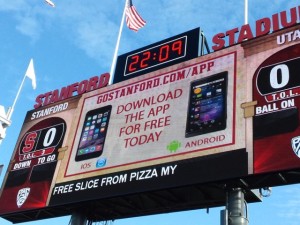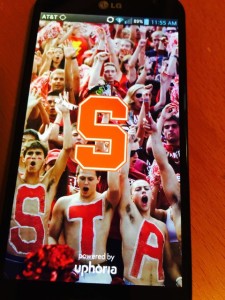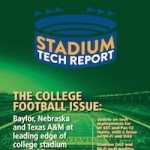In case you missed the first episode, that came in June when Sporting Innovations fired its former co-CEO, alleging basically that he used company resources, trade secrets and relationships in a plot to build a competing entity. In his first response to those claims, Pasha denied the company’s allegations and replied with some legal fire of his own, claiming basically that Sporting Innovations’ other co-CEO, Robb Heineman, was jealous of Pasha’s public recognition for Sporting Innovations’ stadium app work, and refused to provide legal documents that would confirm Pasha’s promised ownership stake in the company.
While the Sporting Innovations lawsuit sought $75,000 in retribution from Pasha, Pasha’s counterclaims want his ownership stake — which is either 20 percent or more — confirmed, while having himself cleared of all the conspiracy charges, which his legal filing claims were trumped up mainly to try to get him to give up his ownership stake in the company and a key patent. Pasha’s filing also seeks “actual and punitive damages” for harm caused to Pasha and his son Zain by the lawsuit.
As Pasha’s filing claims:
Sporting Innovations’ use of legal process is not for the purpose of recovering on the claims stated in the Complaint, but for the illegal, improper and perverted purpose of intimidating and coercing Asim into surrendering his 20% interest in Sporting Innovations, along with his interest in U.S. Patent Application No. 13/789,372.
The next planned step in the proceedings, according to Pasha’s lawyers, is a hearing scheduled for Sept. 2, to talk about the schedule for the case going forward. Sporting Innovations refused to comment on the case. The lawsuit and the counterclaims have been filed with the U.S. District Court for the Western District of Missouri, Western District.
Will fallout cripple Sporting Innovations?
There’s lots of conflicting drama in the two legal sides of this case, and eventually we are guessing a judge or jury will hear all the details. As we said before, we’re not lawyers, but it seems from reading through Pasha’s filings that he has documented answers to refute many of the company’s original claims, including what looks like a personal note from Heineman under which the claimed intent was to transfer more of an ownership stake to Pasha.
However the case ends up, what seems to be clear is that Sporting Innovations is going to have a tough time drumming up new business in the meantime. Sporting Innovations was a business that grew out of technology developments for the Sporting KC professional soccer team and its home stadium, which was one of the first to have full fan-facing Wi-Fi and a specialized fan app. But the company’s vision to provide similar technology to other teams and stadiums may have hit a roadblock with the legal entanglements.
As we already reported, the company’s deal to provide a stadium app for the Pac-12 is dead, and one of the other clients still highlighted on the Sporting Innovations website, the Tampa Bay Lightning, said they are currently moving to a different app platform after using Sporting Innovations technology for their app through last season.










